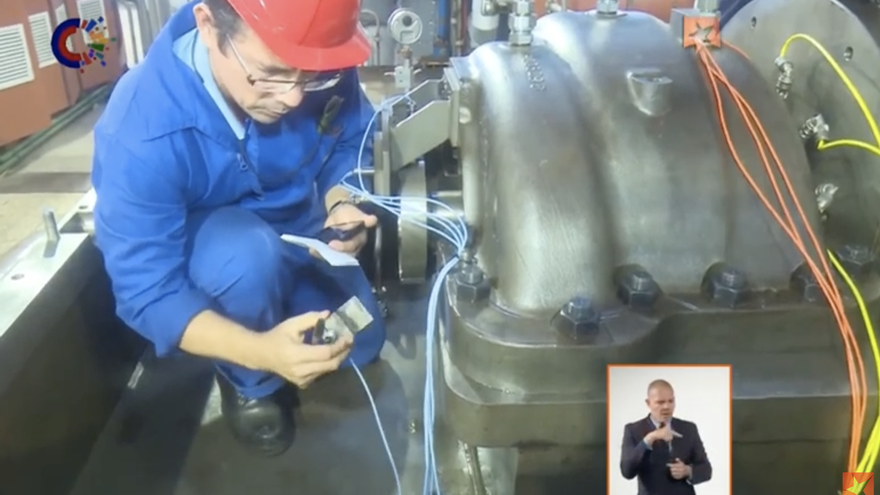
![]() 14ymedio, Madrid, 25 August 2022 — The panorama of Cuba’s national electricity system offered by the officials who appeared on State TV’s Roundtable program on Wednesday is catastrophic and, from what they said, will continue to be so for many more months. The Minister of Energy and Mines himself, Liván Arronte Cruz, declared that maintaining it “is expensive” – installing a megawatt (MW) of new power, he explained, costs between one million and 1.6 million dollars – and “it’s not possible to ensure everything.”
14ymedio, Madrid, 25 August 2022 — The panorama of Cuba’s national electricity system offered by the officials who appeared on State TV’s Roundtable program on Wednesday is catastrophic and, from what they said, will continue to be so for many more months. The Minister of Energy and Mines himself, Liván Arronte Cruz, declared that maintaining it “is expensive” – installing a megawatt (MW) of new power, he explained, costs between one million and 1.6 million dollars – and “it’s not possible to ensure everything.”
After the minister spoke, Edier Guzmán Pacheco, director of Thermal Generation of the Electric Union of Cuba (UNE), explained which blocks or units are out of service and how much it will cost to recover them. Adding up the figures provided by the staff member, the amount would be between $245 million and $265 million.
Specifically, Guzmán Pacheco explained that the Island has “20 thermal blocks” of which only 16 are available. “We have lost four generating blocks, many of them due to large breakdowns,” he said.
These lost units are blocks 6 and 7 of the Máximo Gómez Thermoelectric Power Plant (CTE), in Mariel; block 2 of the Lidio Ramón Pérez CTE, in Felton, in the Holguin municipality of Mayarí, and block 4 of the Diez de Octubre plant, in Nuevitas (Camagüey), precisely where there have been the latest protests.
At the Mariel plant, unit 7 burned down on March 7, and the fire affected unit 6, which was only six months old. To reassemble turbine 7, Guzmán Pacheco acknowledged, “we don’t have the financing,” between 90 and 100 million dollars, he said.
Another fire, on July 8, was also what ruined Unit 2 in Felton, for which the Government has a budget of $55 million. “We don’t have that funding at the moment,” the official repeated.
Felton is also in full maintenance, the authorities reported on the program, and the estimated time for its full recovery will be, they said, “not less than one year.”
As for block 4 of Nuevitas, it will be the first to be ready, “in 40 days,” Guzmán Pacheco said, despite the fact that, at the same time, the “100 or 110 million euros” that the repair costs is “also an amount that we don’t have… We are seeking financing options, looking for credit options that allow us to make this block work,” he said.
If the 20 blocks were working, explained the director of the UNE, they would provide a total of 2,608 MW to the electricity system. With the four breakdowns, they give 2,042 MW. However, these are not constant either, “due to breakdowns and maintenance.”
As of yesterday, for example, block 2 of the Ernesto Guevara CTE, in Santa Cruz del Norte (Mayabeque), was damaged, and blocks 3 of Antonio Maceo, known as Renté, in Santiago de Cuba, and 1 of Felton, were “under maintenance.”
It’s not surprising, if you take into account this other figure provided on the Roundtable program: the average age of Cuba’s electric plants exceeds 35 years.
As usual, officials again blamed the situation on the U.S. embargo. “Due to the financing limitations and the economic siege of the blockade, we cannot count on the continuous participation of technical assistance that allows us to assimilate this technology,” Guzmán Pacheco said.
However, the lack of money for the repair of thermoelectric plants, some of which, they acknowledged, haven’t been maintained for a decade, contrasts with the financing of five-star hotels, whose construction doesn’t stop.
According to estimates by architects, the cost per room in a five-star hotel is 200,000 euros. In other words, an establishment like the 250-room Royalton Habana would have had a construction cost of 50 million, and a hotel with 100 rooms, 20 million.
Regarding the controversial K Tower of El Vedado — also called “López-Calleja tower” because it’s the work of the Gaesa military conglomerate, commanded until his recent death by Raúl Castro’s former son-in-law — some specialists have ventured its cost at a minimum of 200 million dollars; that is, almost the equivalent of the total investment needed to repair and update all the thermoelectric plants.
Translated by Regina Anavy
____________
COLLABORATE WITH OUR WORK: The 14ymedio team is committed to practicing serious journalism that reflects Cuba’s reality in all its depth. Thank you for joining us on this long journey. We invite you to continue supporting us by becoming a member of 14ymedio now. Together we can continue transforming journalism in Cuba.
